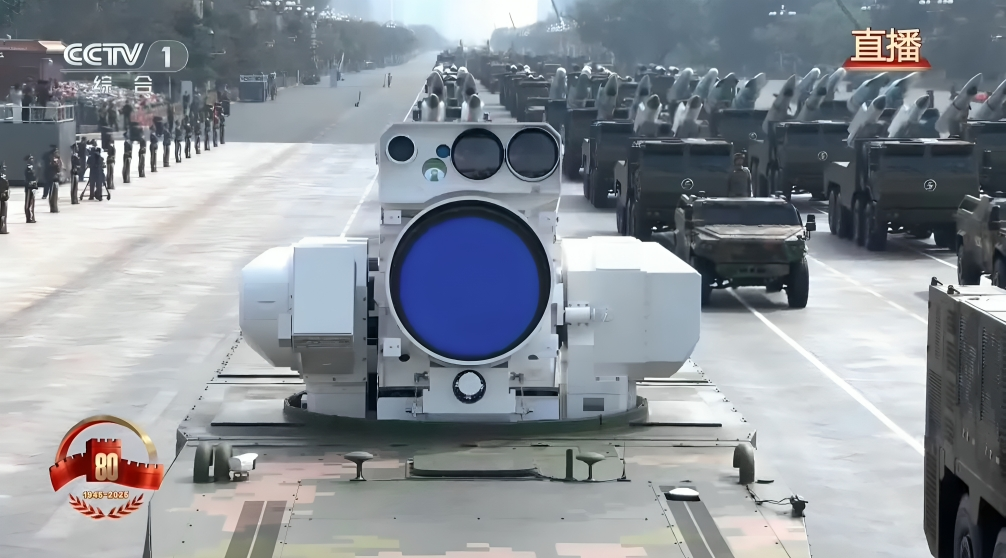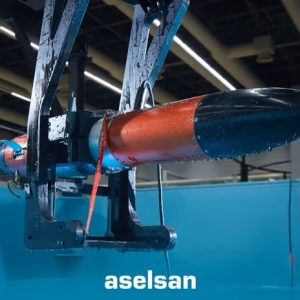China Unveils LY‑1 Naval Laser | Directed‑Energy at Sea
China has officially unveiled the LY‑1 naval laser during its largest victory day parade in Beijing. This marks the first public appearance of the LY‑1 naval laser, a system designed to provide shipborne directed‑energy defence against drones and precision missiles. Its debut signals China’s push to deploy naval laser technology as a cornerstone of future maritime warfare.
Key Facts on LY-1 Naval Laser
- System: LY‑1 naval laser (first public debut)
- Platform: Shown on HZ141 8×8; intended for shipboard self‑defence
- Architecture: Large beam aperture with EO/IR sensors; probable RF/radar support
- Effectors: Sensor blinding/disruption; hard‑kill potential vs small UAS; growth path toward anti‑missile
- Concept of Use: Deep magazine via ship power; near‑zero cost per shot; sustained engagements
LY-1 Naval Laser Architecture and Shipboard Role
The LY‑1 naval laser features a turret with a large beam director supported by electro‑optical and infrared sensors for targeting. A side module likely contains radar and RF sensors to cue engagements. Drawing power directly from the ship, the LY‑1 naval laser enables deep magazines and sustained firing without depleting costly missile stocks. This makes the LY‑1 naval laser a critical element of layered maritime defense.
Cooling and Duty Cycle for Naval Lasers
One of the biggest challenges for naval lasers has been overheating. Chinese researchers reported breakthroughs in cooling technology that may now be integrated into the LY‑1 naval laser. Effective cooling would extend duty cycles and allow the LY‑1 naval laser to operate for longer engagements, a key requirement for shipborne defence against drone swarms and precision missiles.
Tactical Use of LY-1 Naval Laser
The LY‑1 naval laser will initially focus on soft‑kill roles, such as disabling EO/IR sensors and disrupting datalinks. With higher power levels, the LY‑1 naval laser could shift to hard‑kill engagements against drones and loitering munitions. Its precision, low‑cost, and unlimited firing potential make it an ideal complement to conventional CIWS and missile interceptors.
LY-1 Naval Laser in China’s Military Parade
The Beijing parade also featured a broad array of emerging technologies, from robotic wolf scouts to AI‑powered unmanned vehicles and stealth aircraft. The LY‑1 naval laser fit into this narrative of spectrum dominance and electrified effectors, emphasizing China’s focus on integrating advanced systems across its armed forces.
Implications for NATO and Indo-Pacific Navies
The debut of the LY‑1 naval laser places pressure on NATO and Indo‑Pacific navies to accelerate their own directed‑energy programs. The LY‑1 naval laser demonstrates how shipborne lasers could take on close‑in defence missions, preserve missile inventories, and change the cost‑exchange ratio in naval warfare. Future competition will revolve around beam control, atmospheric effects, and operational doctrine.
For related coverage, see China’s expanding nuclear triad.
Conclusion: The Future of LY-1 Naval Laser
The LY‑1 naval laser is not only a showcase of China’s defence technology but also a signpost for the future of maritime warfare. By addressing cooling, power scalability, and integration challenges, the LY‑1 naval laser could become a permanent fixture of PLAN combatants. This will reshape naval tactics and strategy across the Indo‑Pacific and beyond.











